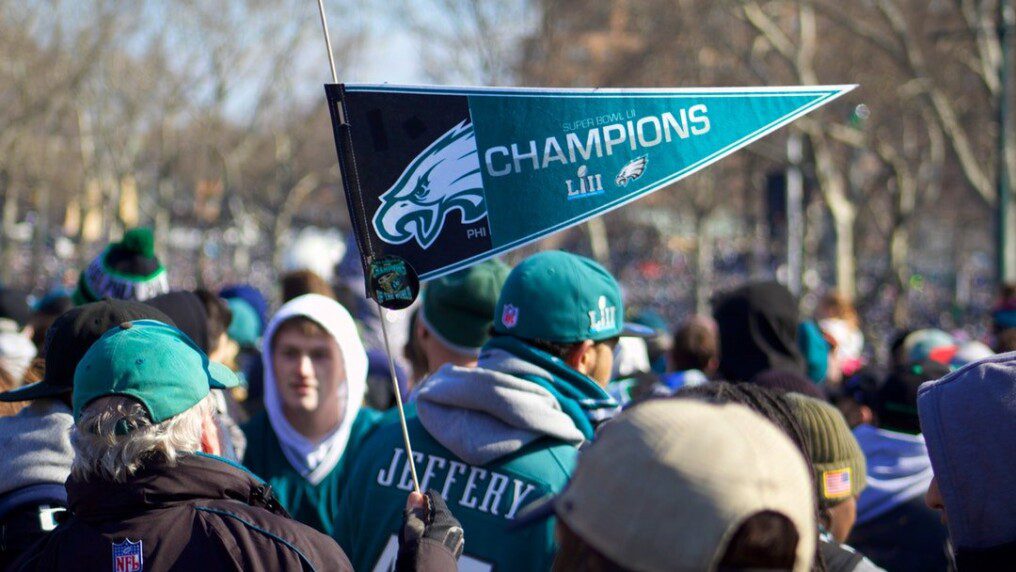
Given that more than 100 million people typically watch the Super Bowl, at least we’re all getting our money’s worth.
When you think about how much the Super Bowl cost to put on, it’s likely that you’re checking your own bank account. However, given how much money teams get to build stadiums and maintain them, it’s no surprise that the average taxpayer is contributing to the NFL.
Here is everything you need to know about that system and how they get away with it.
Threats of Relocation:
Go to some of the greatest working-class cities around the country and you’ll see NFL fans wearing gear that’s about more than who’s on the team.
In Pittsburgh, Chicago, or Oakland, you don’t have just a bunch of statistical nerds who are psyched on the chances that their team is going to win. You have people who carry an identity that’s related to the team that gets together to play every Sunday.
NFL team owners know this and take advantage of it left and right.
In so many cities, they’re able to dig a shovel into the public coffers and take as much as they want with a simple thread of relocating. Because those identities are so strong, they’ll threaten to relocate a beloved team because they want a new stadium or more money for themselves.
Municipalities will start bidding against one another to fight for these franchises.
Since elected officials don’t want to be the one blamed for losing a beloved team over a few dollars misspent, they give owners what they want. So many city councils, mayors, and governors give out lucrative payments to NFL teams and commissioners.
Just a threat that newspapers get wind of is enough to send legislators scrambling to save their constituents’ beloved teams.
The Raiders Raided Taxpayers:
One of the most well-known raiding of public funds in recent years was by the Oakland Raiders. Las Vegas waved a $750 million check in front of the team to create a $2 billion stadium. They increased hotel taxes by less than 1 percent to raise this money.
Many people were critical of the NFL extorting money from the local community. In the past, the former owner Al Davis wasn’t allowed to get public funding to renovate the Oakland Coliseum. They ended up moving to LA for a number of years.
After a couple of Los Angeles years, Oakland got the Raiders back with $200 million in taxpayer-funded renovations. Then in 2015, the Davis son who inherited the team then again threatened to move.
Because they wanted to avoid losing them again, the city of Oakland offered a huge swath of land for building a new stadium. They zoned it for mixed-use retail and residential land to ensure they could make a hefty profit off of it.
However, once Las Vegas got into the bidding war, Oakland was dwarfed.
While the whole situation is still up in the air, the Raiders are planning on moving in a few years.
The Chargers Charged Billions:
Following the lead of the Raiders, the San Diego Chargers also tried to get a new stadium.
They asked the taxpayers, via a ballot measure, to allocate $1 billion for their new stadium using a 4% hotel tax. When voters rejected the measure, the Chargers said they’d move to LA instead.
Given that the city was already paying $7 million a year to subsidize operating and maintaining the stadium, they had had enough.
The billionaire Spanos family who owns the Chargers claimed that they did everything they could to stay in San Diego, but it’s hard to say how true that is.
They went where the money was because they couldn’t get what they wanted out of San Diego. For now, the Chargers are going to share their stadium with the LA Rams. The Rams left St. Louis a few years ago despite getting nearly half a billion dollars in public money to fund their new stadium.
In Los Angeles, the Chargers will share a new home with the Los Angeles Rams, which relocated from St. Louis despite the offer of $400 million in public financing towards a $1.1 billion riverfront stadium.
Cincinnati is Paying Endlessly:
Wherever you see football, you can almost guarantee that the stadium the game is held in is being paid for by taxpayers. On top of that, there are millions in subsidies to keep things running.
Cincinnati is a particularly intense example of how taxpayers end up on the hook forever.
In the year 2000, the county paid more than $400 million for the new Paul Brown Stadium. All the team had to come up with to finish it was another $25 million, a relative deal compared to how much these stadiums usually cost.
However, the county is still paying millions of dollars every year.
Since the 2000 opening of that stadium, the taxpayers have paid nearly $175 million just to maintain and keep the stadium operating.
Ask who pays to keep the lights on and you won’t see the team even covering that. There’s even a clause in the contract for the stadium that if up to 14 other NFL stadiums have a special feature, then Paul Brown Stadium gets it too.
This ensures that a typically weak team has the same standard in stadiums that is offered to some of the best teams in the league. If the Bengals ownership ever tries to say that they care about the community, ask why they take so much money away.
If you want to find out more about which team could be the next to win big and set the standard for stadium features, take some time to find out more.
The Super Bowl Cost Comes Out of Your Paycheck:
While you probably don’t think that the Super Bowl cost comes out of your own paycheck, you’d be surprised. There is so much money that could be helping rebuild our schools or protect the environment that the NFL feels entitled to take.
If you want to look more into just how much money there is in sports, check out our guide to how the League of Legends is comparing.
Read Also:




























